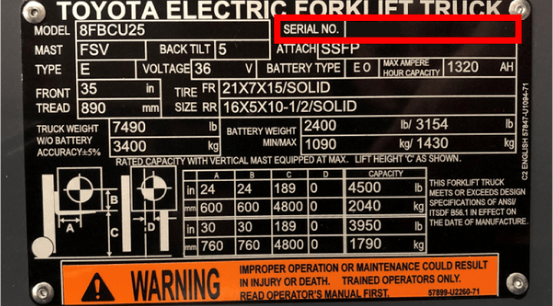Understanding Different Forklift Types and Their Applications
?qlt=85&ts=1754774837150&dpr=off)
Common Types of Forklifts
There are many different forklift types, each carefully designed for specific applications and each offering its own unique set of benefits and features. Below is a list of the seven most common types of forklifts:
1. Electric Forklifts
2. IC Forklifts
3. Order Pickers
4. Reach Trucks
5. High-Capacity Forklifts
6. Pallet Jacks
7. Pallet Stackers
Selecting the right forklift for your needs is essential to efficiency and productivity, which is why it is so important to understand the key differences in each class of forklifts. With varying forklift “classes” with subtle differences, it can be difficult to even know where to begin your forklift search.
What are the Different Forklift Types?
- Class I: Electric Motor Rider Forklifts
- Class II: Electric Motor Narrow Aisle Forklifts (Reach Trucks, Order Pickers)
- Class III: Electric Pallet Jacks, Stackers, and Tow Tractors
- Class IV: Internal Combustion Cushion Tire Forklifts
- Class V: Internal Combustion Pneumatic Tire Forklifts
- Class VI: Electric/IC Engine Tow Tractors
Let’s explore the distinct applications, benefits, and features of each of the seven classes of forklifts:
Class I: Electric Motor Riders
Class I Forklifts are electric motor riders. These electric-powered forklifts are ideal for loading and unloading tractor-trailers, handling pallets, and a number of other applications in industries ranging from food storage and retail to factory and general warehousing.
Because they are powered by an electric battery, Class I forklifts are much quieter and create no emissions, making them a popular choice for indoor applications. Batteries on Class I forklifts also function as part of the counterweight to help maintain lifting capacity.
Toyota offers a number of versatile lift trucks in this class, ranging in lift capacity from 3,000 to 40,000 pounds and with electrical systems ranging between 24-volt and 80-volt. Click on each of Toyota’s Class I Forklift models below to learn more about their individual features.
Class II: Electric Motor Narrow Aisle
Class II Forklifts are electric, narrow aisle models. As the name suggests, Class II forklifts are designed with maneuverability that allows them to operate in tight spaces and narrow aisles. This class of forklifts is perfect for picking and putting away inventory, and these trucks provide users the ability to increase racking space without expanding their current warehouse.
Select any of Toyota's Class II forklift models below to explore their unique features.
Class III: Electric Pallet Jacks / Stackers / Tow Tractors
Class III equipment includes electric pallet jacks, stackers, and tow tractors. This class of equipment comes in both rider and walk behind (“walkie”) models, perfect for unloading deliveries and moving loads to a staging area where they can be handled by other types of forklifts.
Toyota's Class III models include three different stackers that are ideal for the food and beverage storage industries, among others.
Click on each forklift model below to learn more.
Class IV: Internal Combustion Engine Cushion Tire
Class IV Forklifts are internal combustion engine cushion tire trucks. This class of sit-down forklifts is designed for indoor use. Class IV Forklifts are powered by internal combustion (IC) engines that run on diesel fuel, LP gas, gasoline, or compressed natural gas. Their solid, cushioned tires provide a smooth ride on indoor surfaces and they’re puncture-proof since they are not air-filled.
Toyota offers Class IV models with lifting capacities ranging from 3,000 to 100,000 pounds. Click on each of the forklift models below to learn more about their individual features.
Class V: Internal Combustion Engine Pneumatic Tire
Class V forklifts are internal combustion engine pneumatic tire trucks. They are similar to those in Class IV but are designed primarily for outdoor use. These highly durable forklifts are ideal for lumberyards, construction sites, and other outdoor applications.
Toyota offers Class V forklifts with lifting capacities ranging from 3,000 to 125,000 pounds. Click on each individual forklift model below to learn more about its individual features.
Class VI: Electric/ IC Engine Tow Tractors
Class VI equipment includes electric and internal combustion engine tow tractors. These machines are most commonly used for towing loads rather than lifting. Trucks in this class are ideal for use at airports but are also commonly used in assembly line areas.
Toyota’s Large Tow Tractor boasts a maximum tugging capacity of over 50,000 pounds and features an extremely tight turn radius. Its AC Drive system enables quicker acceleration, high top speeds, and extended peak operator time.
How to Choose Between IC (Gas-powered) or Electric Forklifts:
Deciding whether an internal combustion forklift or electric forklift is appropriate for your application can seem like a daunting task. Here are some high-level considerations that you might take into account when choosing between a gas-powered and electric-powered forklift:
Electric Forklift Benefits
- Typically less maintenance than IC forklifts
- Quieter with little emission sounds
- No fuel-storage requirements
- Many have lithium-ion battery compatibility
- Requires a charging station
- No tailpipe emissions
- Lifespan depends on the application, use, and maintenance
- A better option for smaller, confined areas
Internal Combustion Forklift Benefits
- Operate on gasoline, diesel, compressed natural gas, or liquid propane gas
- Primarily used outdoors, but can be used in moderation in some indoor applications
- Can operate in various conditions
- No batteries to recharge
- Toyota’s IC Forklift line can lift over 51,000 lbs.
- Lifespan depends on the application, use, and maintenance
- Noise emissions meet or exceed ANSI B56.1 standards
Let a certified Toyota Dealer help you make the best decision when choosing between an electric or IC forklift. Our forklift experts will work directly with your business to determine the best option(s) to tackle whatever challenges you might be facing.


